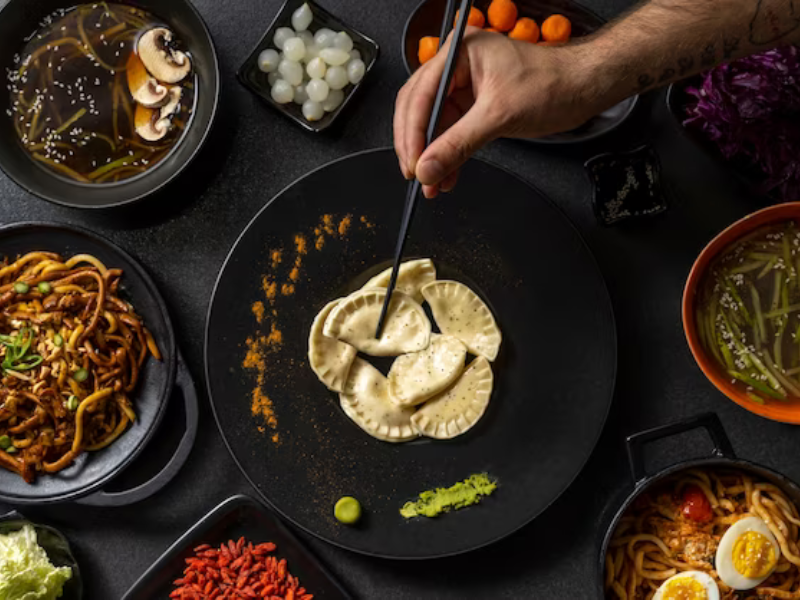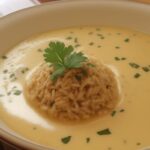Exploring the Rich and Diverse Flavors of Chinese Cuisine
Chinese cuisine is renowned worldwide for its rich and diverse flavors. With a history spanning thousands of years and a tradition of using fresh, seasonal ingredients, Chinese cuisine offers a wide range of dishes that appeal to a variety of tastes. From the spicy and savory flavors of Sichuan cuisine to the delicate and subtle flavors of Cantonese cuisine, there is something for everyone to enjoy.
In this article, we will explore the rich and diverse flavors of Chinese cuisine, highlighting some of the most popular regional cuisines and must-try dishes. We will delve into the unique ingredients, cooking techniques, and cultural influences that contribute to the vibrant tapestry of Chinese culinary traditions.
1. A Brief History of Chinese Cuisine
Chinese cuisine has a long and illustrious history that dates back thousands of years. With influences from various regions, including the Middle East, Central Asia, and Southeast Asia, Chinese cuisine has evolved over time to become one of the most diverse and complex culinary traditions in the world. The use of fresh, seasonal ingredients and a focus on balance and harmony in flavors are key principles that underpin Chinese cooking.
2. The Eight Great Regional Cuisines of China
China is a vast country with a diverse range of regional cuisines, each with its own unique flavors and cooking styles. The Eight Great Regional Cuisines of China are Sichuan, Shandong, Jiangsu, Zhejiang, Fujian, Guangdong (Cantonese), Hunan, and Anhui. Each of these cuisines has its own distinctive characteristics and signature dishes that reflect the local culture and geography.
3. Sichuan Cuisine: Spicy and Satisfying
Sichuan cuisine is known for its bold and spicy flavors, thanks to the liberal use of Sichuan peppercorns and chili peppers. Signature dishes include mapo tofu, kung pao chicken, and hotpot. Sichuan cuisine is famous for its numbing and tingling sensation, known as “ma la,” which is achieved by using Sichuan peppercorns.
4. Cantonese Cuisine: Delicate and Savory
Cantonese cuisine is characterized by its emphasis on fresh ingredients and delicate cooking techniques. Steaming, stir-frying, and braising are common cooking methods used in Cantonese cuisine. Signature dishes include dim sum, wonton noodles, and roast duck. Cantonese cuisine is renowned for its subtle and balanced flavors, with an emphasis on freshness and simplicity.
5. Shandong Cuisine: Seafood and Savory Delights
Shandong cuisine is known for its emphasis on seafood, including dishes such as sweet and sour carp, fish dumplings, and shrimp stir-fry. Shandong cuisine is characterized by its use of vinegar, garlic, and soy sauce to enhance the flavors of the dishes. With a long coastline, Shandong cuisine also features a variety of seafood dishes that showcase the region’s abundant marine resources.
6. Jiangsu Cuisine: Sweet and Fragrant
Jiangsu cuisine is known for its sweet and fragrant flavors, thanks to the use of sugar, soy sauce, and rice wine in many dishes. Signature dishes include braised pork belly, soup dumplings, and xiaolongbao (steamed buns). Jiangsu cuisine is characterized by its delicate and refined cooking techniques, with an emphasis on presentation and aesthetics.

7. Zhejiang Cuisine: Fresh and Light
Zhejiang cuisine is characterized by its emphasis on fresh ingredients and light flavors. Signature dishes include fish soup, West Lake vinegar fish, and beggar’s chicken. Zhejiang cuisine is known for its use of freshwater fish, bamboo shoots, and other local ingredients that showcase the region’s natural beauty and resources.
8. Fujian Cuisine: Seafood and Soups
Fujian cuisine is known for its emphasis on seafood and soups, thanks to the region’s long coastline and rich marine resources. Signature dishes include fish ball soup, braised abalone, and drunken chicken. Fujian cuisine is characterized by its use of fresh ingredients and simple cooking techniques that allow the natural flavors of the ingredients to shine through.
9. Guangdong (Cantonese) Cuisine: The Mother of Chinese Cuisine
Guangdong, also known as Cantonese cuisine, is considered the “mother of Chinese cuisine” due to its influence on other regional cuisines. Signature dishes include dim sum, roast duck, and steamed fish. Guangdong cuisine is characterized by its emphasis on fresh ingredients, delicate flavors, and meticulous cooking techniques that highlight the natural sweetness of the ingredients.
10. Hunan Cuisine: Spicy and Savory
Hunan cuisine is known for its bold and spicy flavors, thanks to the generous use of chili peppers and garlic in many dishes. Signature dishes include spicy tofu, Chairman Mao’s red-braised pork, and crispy duck. Hunan cuisine is characterized by its fiery and robust flavors, with an emphasis on bold and vibrant seasonings that pack a punch.
11. Anhui Cuisine: Rustic and Hearty
Anhui cuisine is known for its rustic and hearty flavors, thanks to the use of wild herbs, mushrooms, and bamboo shoots in many dishes. Signature dishes include braised turtle, stinky tofu, and hairy crab. Anhui cuisine is characterized by its use of indigenous ingredients and unique cooking techniques that reflect the region’s rugged terrain and agricultural traditions.
12. Common Ingredients in Chinese Cuisine
Chinese cuisine is rich in a variety of ingredients, including rice, noodles, tofu, soy sauce, vinegar, garlic, ginger, and chili peppers. Various meats, seafood, and vegetables are also commonly used in Chinese cooking. Herbs and spices such as star anise, Sichuan peppercorns, and Chinese five-spice powder are popular seasonings that add depth and complexity to dishes.
13. Cooking Techniques in Chinese Cuisine
Chinese cuisine employs a variety of cooking techniques, including stir-frying, steaming, braising, deep-frying, and boiling. Each cooking method is used to highlight the natural flavors and textures of the ingredients and create a harmonious balance of flavors in the dish. Wok cooking is a common technique used in Chinese cuisine, allowing for quick and efficient cooking over high heat.
14. Cultural Influences in Chinese Cuisine
Chinese cuisine is deeply influenced by the country’s rich cultural heritage, with influences from various regions and ethnic groups. The use of fresh, seasonal ingredients and a focus on balance and harmony in flavors are key principles that underpin Chinese cooking. Many dishes are steeped in tradition and have symbolic meanings, making Chinese cuisine an integral part of cultural celebrations and rituals.
15. Must-Try Dishes in Chinese Cuisine
When exploring the rich and diverse flavors of Chinese cuisine, there are certain dishes that should not be missed. Must-try dishes include Peking duck, dumplings, hotpot, sweet and sour pork, and stir-fried noodles. These dishes represent the best of Chinese culinary traditions and showcase the unique flavors and cooking techniques of the various regional cuisines.
In conclusion
Chinese cuisine offers a rich and diverse tapestry of flavors that appeal to a wide range of tastes. From the spicy and savory dishes of Sichuan cuisine to the delicate and subtle flavors of Cantonese cuisine, there is something for everyone to enjoy in Chinese cuisine. By exploring the regional cuisines, unique ingredients, cooking techniques, and cultural influences that shape Chinese cooking, we can gain a deeper appreciation for this vibrant culinary tradition. So go ahead, explore the rich and diverse flavors of Chinese cuisine and savor the delicious dishes that have delighted diners for centuries.
FAQs about “Exploring the Rich and Diverse Flavors of Chinese Cuisine”
- What makes “Exploring the Rich and Diverse Flavors of Chinese Cuisine” stand out among other books on Chinese cooking? “Exploring the Rich and Diverse Flavors of Chinese Cuisine” offers a comprehensive journey through the vast and varied landscape of Chinese culinary traditions. It goes beyond just recipes, providing insights into the cultural significance, regional variations, and diverse ingredients that shape Chinese cuisine, making it an essential guide for both novice and seasoned cooks.
- What can readers expect to discover about Chinese cuisine through this book? This book delves into the rich tapestry of Chinese cuisine, exploring its history, techniques, and flavor profiles. Readers will uncover the secrets behind iconic dishes, learn about the regional specialties that define different provinces, and gain a deeper appreciation for the cultural significance of food in Chinese society.
- Are there beginner-friendly recipes included in “Exploring the Rich and Diverse Flavors of Chinese Cuisine”? Yes, “Exploring the Rich and Diverse Flavors of Chinese Cuisine” caters to cooks of all skill levels, with a range of recipes suited for beginners to advanced chefs. Whether you’re learning to stir-fry vegetables, steam dumplings, or make homemade noodles, you’ll find clear instructions, step-by-step photos, and helpful tips to guide you through the cooking process.
- How does this book showcase the diversity of Chinese cuisine? This book celebrates the incredible diversity of Chinese cuisine by highlighting the unique flavors, ingredients, and cooking techniques of different regions across China. From the spicy dishes of Sichuan to the delicate dim sum of Cantonese cuisine, readers will embark on a culinary journey that explores the breadth and depth of Chinese gastronomy.
- Can I expect to learn about the cultural and historical influences on Chinese cuisine in this book? Absolutely! “Exploring the Rich and Diverse Flavors of Chinese Cuisine” delves into the cultural and historical influences that have shaped Chinese culinary traditions over centuries. Readers will gain insights into the role of food in Chinese festivals and rituals, the impact of migration and trade on regional cuisines, and the evolution of Chinese cooking techniques throughout history.
Advantages:
- Culinary diversity: Chinese cuisine is known for its wide variety of flavors, ingredients, and cooking techniques, offering readers a rich and diverse culinary experience to explore.
- Cultural immersion: The title suggests an exploration of Chinese cuisine, providing readers with insights into the culture, history, and regional differences of Chinese cooking.
- Gastronomic adventure: Readers can anticipate embarking on a culinary journey through the rich and diverse flavors of Chinese cuisine, discovering new tastes and dishes along the way.
- Educational value: Exploring Chinese cuisine offers readers the opportunity to learn about the cultural significance of different Chinese dishes, as well as the stories behind their creation.
- Inspiration for cooking: The title may inspire readers to try cooking Chinese dishes at home, expanding their culinary repertoire and experimenting with new flavors and ingredients.
Disadvantages:
- Generalization: The term “Chinese cuisine” encompasses a wide range of culinary traditions across different regions of China, potentially oversimplifying the diversity within Chinese cooking.
- Lack of specificity: The title does not specify which aspects of Chinese cuisine will be explored, leaving readers uncertain about the focus or depth of the content.
- Potential cultural appropriation: Without proper context and respect for the origins of dishes, exploring Chinese cuisine could risk appropriating cultural elements without understanding their significance.
- Accessibility: Some ingredients and cooking techniques in Chinese cuisine may be challenging to find or replicate for readers outside of China or major metropolitan areas, limiting the practicality of the exploration.
- Dietary restrictions: Chinese cuisine often includes ingredients like soy sauce, gluten, and meats, which may not be suitable for individuals with dietary restrictions or preferences, potentially alienating some readers.
















